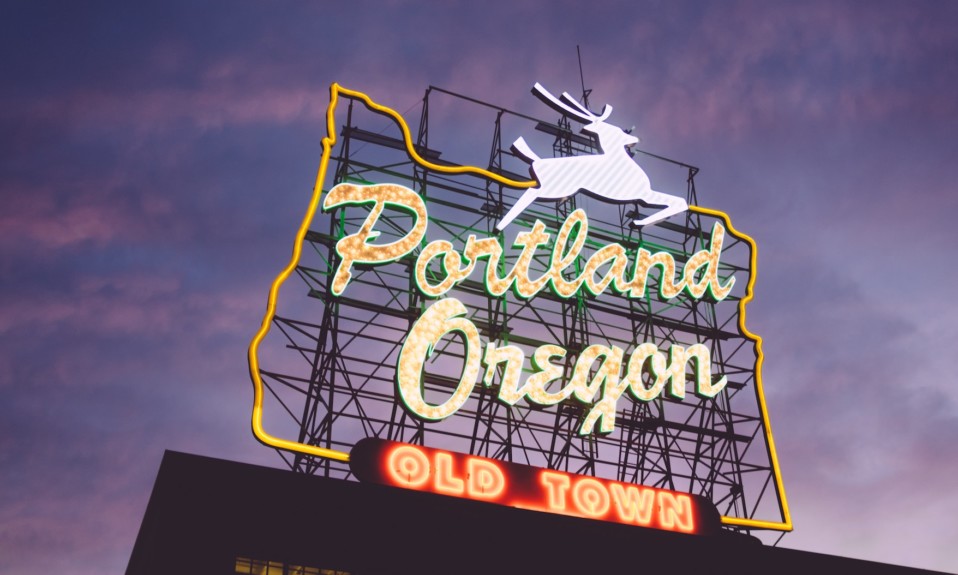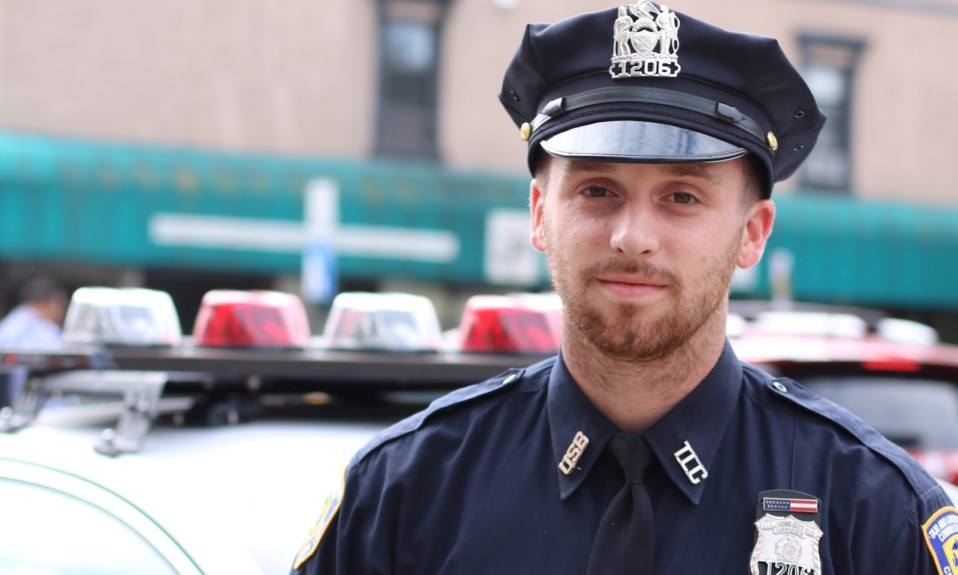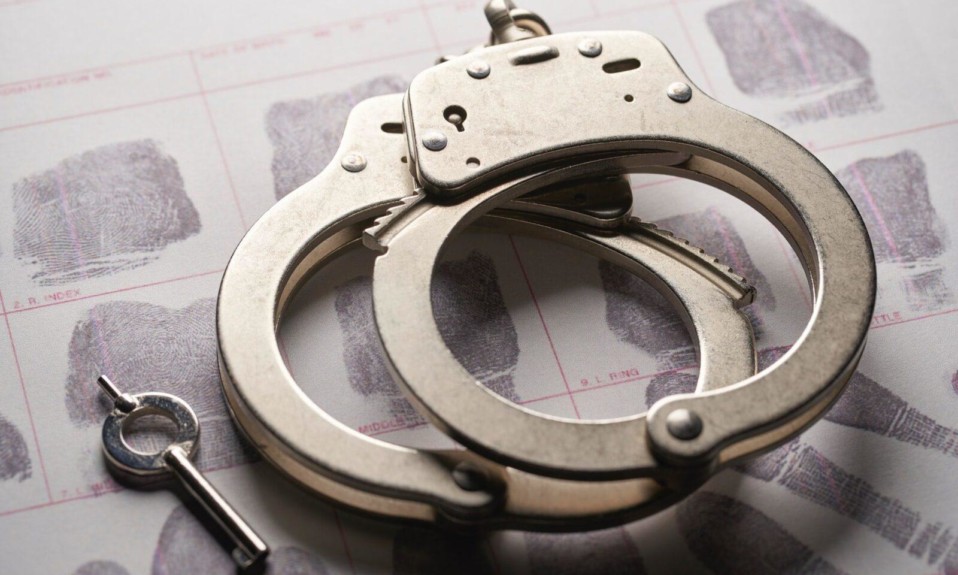Measure 110 radically altered the state’s drug-possession laws and mandated wider services for addiction treatment. We check in to see how it’s going
By Jason Langendorf
One year after the landmark enactment of Measure 110, which effectively decriminalized drug possession across the state of Oregon, Monta Knudson has already seen its tangible effects on his community. He recognizes it in the number of beds still available to people in need, the number of peer counselors who remain on duty and the doors of facilities offering behavioral health services that have been kept open.
Knudson, the executive director of the Portland-based Bridges to Change program, knows the ripple effect that a chunk of funding, a bit of elbow grease and the focused determination of people who want to help can have on a person suffering from addiction. He understands the profound significance of connecting with people who use drugs (PWUD) and helping them improve their lives. Because Knudson has seen—has lived—both sides.
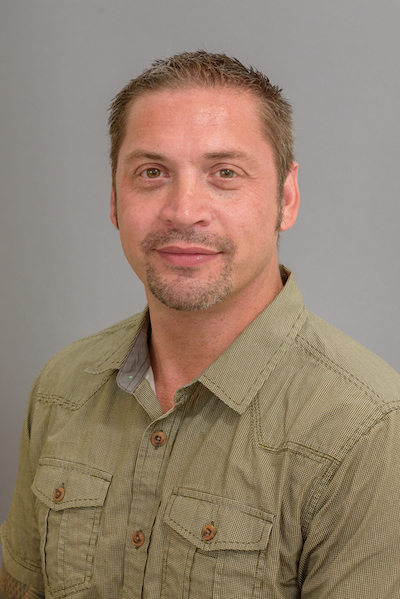
Long before Feb. 2, 2021, when the implementation of Measure 110 made Oregon the first state in the U.S. to decriminalize low-level drug possession and began the process of increasing access to harm reduction services across the state, Knudson was a Portlander with an addiction and a habit of petty theft to get money to buy drugs. All told, Knudson says, over the course of 15 years he was arrested 25 times and served four stints behind bars, totaling some 10 years off and on as he moved through the turnstiles of the criminal justice system. “I call it the installment plan,” he says.
Knudson can joke about his experiences today because he was fortunate enough to find the right program at the right moment. After being released from prison for the last time in 2005, Knudson was introduced to Bridges to Change, undergoing addiction treatment and receiving peer counseling that has helped him maintain his recovery ever since. Within three years of entering the program, he became a peer recovery mentor himself, and eventually was promoted to manager. After briefly leaving for another organization, Knudson was drawn back to Bridges to Change in 2015, when he was named executive director.
“The large majority of folks that are incarcerated are there for substance use disorder and or mental health challenges. If we’re not treating the root of the issue, we’re just housing people and then waiting for them to come back.”
—Monta Knudson, executive director, Bridges to Change
Perhaps no one knows better than Knudson—who didn’t receive treatment or counseling until his final prison term—how the right support can change a life.
“The large majority of folks that are incarcerated are there for substance use disorder and or mental health challenges,” Knudson says. “If we’re not treating the root of the issue, we’re just housing people and then waiting for them to come back.”
Decriminalization: Successes and Challenges
Measure 110 was championed by the Drug Policy Alliance (DPA), a nonprofit organization whose mission is to end the War on Drugs and, most pointedly, reduce or eliminate the punitive and unequal outcomes of drug policy in America. The legislation, which state voters approved in November 2020, was intended to reduce the harmful effects of criminalization, specifically in the communities that have suffered the most from their damage. Additionally, though, M110 was designed to connect PWUD to needed services and to create more availability for those resources across Oregon. Thus far, more than $31 million in funding—part of a two-year, $300 million commitment backed in part by a state marijuana tax—has been released to grantee programs.
While the DPA points to the number of Oregonians who have been able to access services (more than 16,000) and a sharp decline in drug arrests since M110 took effect, critics raise issues of open drug use and the communities of unhoused PWUD scattered around Portland, as well as other cities and towns.
Knudson, who happens to spot a large PWUD camp from his car while he’s speaking on the subject, admits that Portland is “in a bad spot.” But he also says it’s important to understand the context of where the city and the state were before M110.
In 2018, the Lund Report, citing data from SAMHSA, took measure of Oregon’s spiraling problem: Despite having the fourth-highest addiction rate in the U.S., Oregon ranked 49th out of 50 states in available addiction treatment options. In the years since, the advancing opioid epidemic, the proliferation of fentanyl and a global pandemic have brought a perfect storm to both the state and the country, one that Knudson says has left most addiction facilities fighting to keep up.
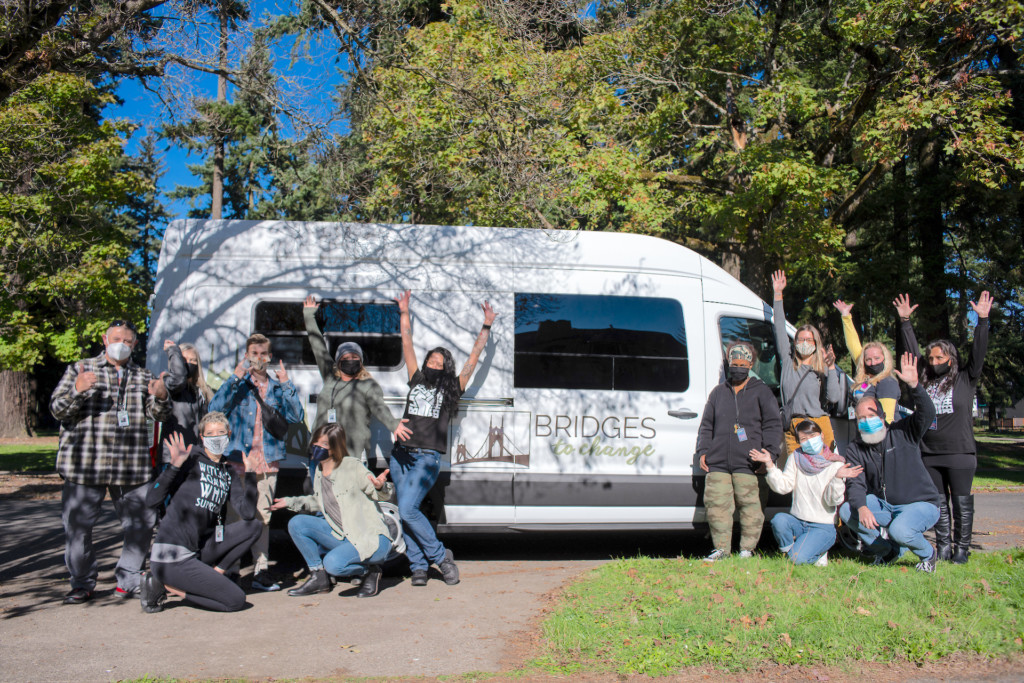
“Literally everything stopped for eight or nine months,” he says of the pandemic’s effects on addiction care. “I mean, organizations like mine—I have 180 employees, and all of a sudden you have to build out a telehealth system that you never had before. And it’s not just me. It’s all of the other providers. With an already fractured system, COVID just really kicked us in the face. So yeah, there’s homeless camps everywhere. Folks are struggling, and it’s taken a minute.”
Programs Saved, Services Expanded
Nevertheless, M110 funding has already brought a level of stability. With an estimated $600,000 in grant funding, Bridges to Change was able to save certain programs that were due to be shut down, including a facility in The Dalles, a small rural town located about an hour east of Portland.
“We were going to lose 30 housing beds,” Knudson says. “We only had seven or six staff there. We were going to be down to two when we got funded, and we were able to keep our Dalles program alive. In addition to that, we were able to conceptualize and put together a recovery access center, which has about 24 beds for quick stays, with services on-site to get folks into other stable, more permanent housing models. And so my organization and a lot of others were funded by that very small amount of money that people benefited from.”
“Measure 110 isn’t going to come anywhere close to solving all of Portland’s problems. But it’s going to give us providers funding that we need to start to put into play the systems that we’ve all conceptualized.”
—Monta Knudson
According to ongoing data collection from the Oregon Health Authority, no fewer than 67 organizations have been supported by the initial release of funds associated with M110, including 11 Native American tribal organizations. That has already translated to 80 full-time staff hires, the purchase of nine vehicles (for on-the-go medication-assisted treatment services, mobile exam rooms and more) and the acquisition of two new recovery houses. Still to come: the establishment of at least one behavioral health resource network—comprising housing, employment, harm reduction and expanded treatment services—in every county and tribal area in the state, a mandate of the M110 legislation to ensure improved and more equitable access to care for Oregonians.
“The Oregon legislature initially released that funding early because we pushed really hard and basically said, People are dying every day and we can’t wait to do this,” says Devon Downeysmith, communications director at Oregon Health Justice Recovery Alliance. “That makes me think, Wow, they can do that with $30 million. What are they going to do with the next $270 million that’s going to be released to create these behavioral health resource networks later this spring?”
Knudson has no illusions about untangling Oregon’s addiction issues overnight. “Measure 110 isn’t going to come anywhere close to solving all of Portland’s problems,” he says. “But it’s going to give us providers funding that we need to start to put into play the systems that we’ve all conceptualized.”
And perhaps begin changing more lives for the better, one by one.
Top photo: Zack Spear


